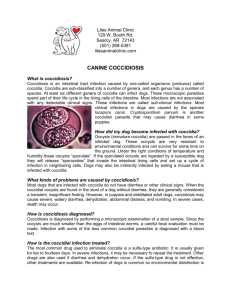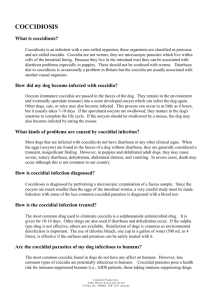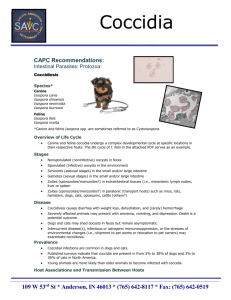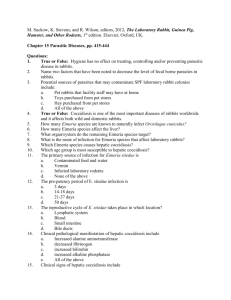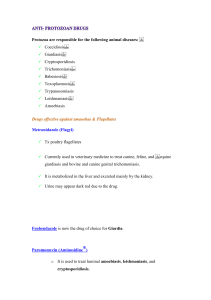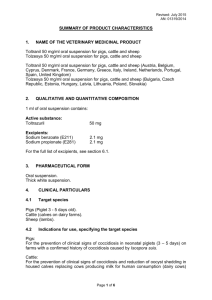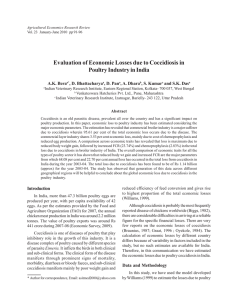Coccidiosis Of Cattle, Sheep, Goat and Horses
advertisement
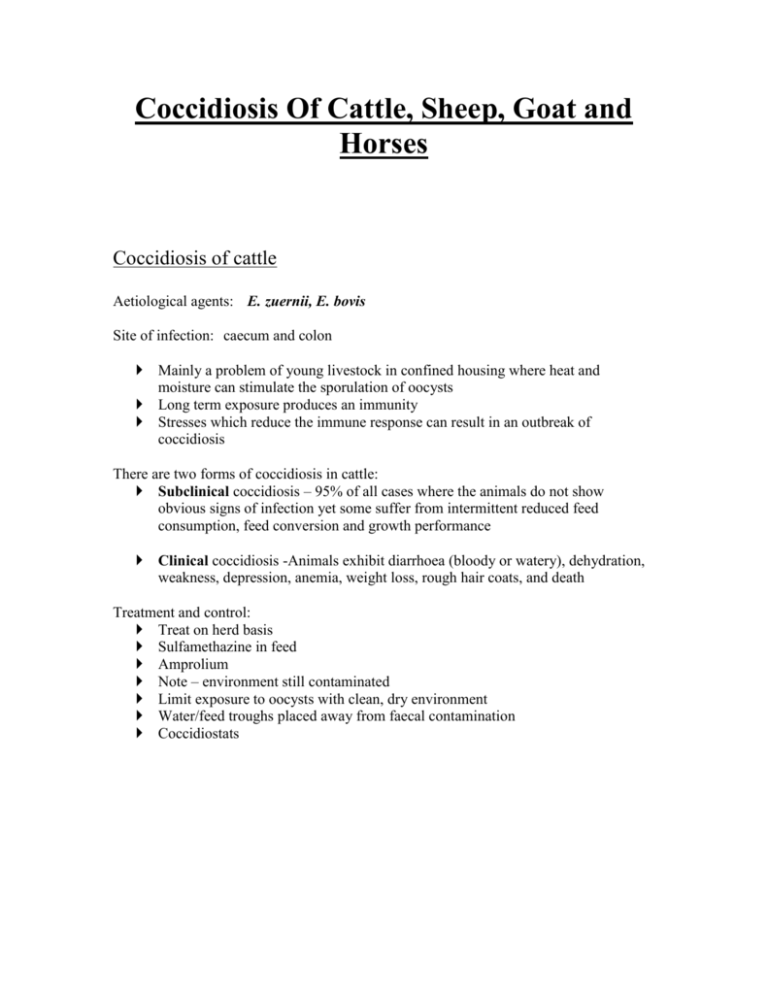
Coccidiosis Of Cattle, Sheep, Goat and Horses Coccidiosis of cattle Aetiological agents: E. zuernii, E. bovis Site of infection: caecum and colon Mainly a problem of young livestock in confined housing where heat and moisture can stimulate the sporulation of oocysts Long term exposure produces an immunity Stresses which reduce the immune response can result in an outbreak of coccidiosis There are two forms of coccidiosis in cattle: Subclinical coccidiosis – 95% of all cases where the animals do not show obvious signs of infection yet some suffer from intermittent reduced feed consumption, feed conversion and growth performance Clinical coccidiosis -Animals exhibit diarrhoea (bloody or watery), dehydration, weakness, depression, anemia, weight loss, rough hair coats, and death Treatment and control: Treat on herd basis Sulfamethazine in feed Amprolium Note – environment still contaminated Limit exposure to oocysts with clean, dry environment Water/feed troughs placed away from faecal contamination Coccidiostats Coccidiosis of Sheep Aetiological agents: E. ovinoidalis, E. crandallis Site of infection: Ileum, caecum, and upper colon are usually most affected Infections with some species of Eimeria are one of the most economically important diseases of sheep Mainly affect lambs 1-6 months old Adults serve as carriers Most susceptible conditions include: Lambing pens, intensive grazing areas, and feedlots Also shipping, over crowding Contamination of the environment with oocysts from ewes Treat herd prophylactically – treating individual animals not effective Clinical signs: Diarrhoea ◦ Lamb scours brown and liquid, bloody, mucoid Dehydration Fever Inappetence, weight loss Anemia Wool breaking Death Pathological findings: Ileum, caecum, and upper colon are usually most affected ◦ thickened, edematous, and inflamed; sometimes there is mucosal hemorrhage ◦ Coccidia nodules Immune complex glomerulonephritis Fly strike and secondary bacterial enteric infections may follow Coccidiosis of Goat Aetiological agents: E. arloingi Site of infection:Small intestine Highly pathogenic in kids Clinical signs include diarrhoea with or without mucus or blood, dehydration, emaciation, weakness, anorexia, and death Small intestine appears congested, hemorrhagic, or ulcerated – villi sloughed Management practices and control same as sheep
